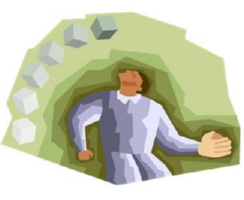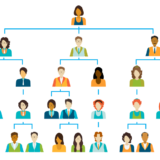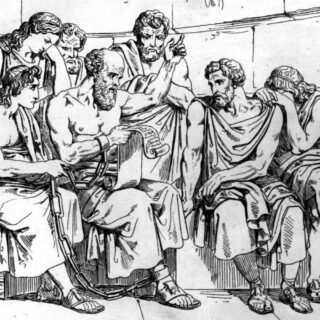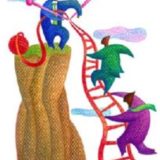
Companies are frequently facing the need to restructure their organizations. Changes in leadership, a shift in strategy, or changing factors within an organization often create the need for reorganizing. Organization design is one of the most powerful tools available to senior managers for shaping the direction of their organizations.
“Organization design” is often used incorrectly to refer only to an organization’s structure. However, organization design is much broader than rearranging the boxes on the organization chart. Simply stated, the organizational design process aims to maximize the organization’s chances of delivering its strategy. It is the deliberate process of configuring structures, processes, reward systems, and people practices and policies to create an effective organization capable of achieving its business strategy.
Organizational leaders often lack the tools necessary to help them in making decisions about how to design their organizations. Efforts at restructuring are often uneven and lacking a systematic approach. Decisions to reorganize are often made with insufficient information and without a clear process to guide the effort. The result is that reorganization efforts often fail to produce the desired outcomes, leading instead to further confusion or problems within the organization down the road.
A popular organizational design framework is the Star Model, developed by Jay Galbraith in the 1960’s. The framework is designed to be used as the basis for an organization’s design choices. The framework is made up of five components which can be manipulated by management and leadership to shape an organization and the behavior of the people within it.
 We can see in the illustration that there are five components of the organization design: Strategy, Structure, Processes, Rewards, and People. Let’s look at each of them briefly.
We can see in the illustration that there are five components of the organization design: Strategy, Structure, Processes, Rewards, and People. Let’s look at each of them briefly.
Strategy
Strategy is the first component to be addresses in the Star Model. Strategy defines the direction of the organization. It is important to tackle strategy first because any organizational form we end up with will involve compromise, so by setting the strategy first it enables us to make the right compromises.
Structure
Structure determines the location of decision-making power. Structural decision can be divided into four areas:
- Specialization: refers to the type and numbers of job specialties used in performing the work. Shape refers to the number of people constituting the departments (that is, the span of control) at each level of the structure. Large numbers of people in each department create flat organization structures with few levels.
- Shape: refers to the number of people constituting the departments (that is, the span of control) at each level of the structure. Large numbers of people in each department create flat organization structures with few levels.
- DistributionofPower: refers to centralization vs. decentralization along with whether we push power down through the organization to the lowest levels where the issues and information are, or whether we want all decisions to go through decision-making bodies.
- Departmentalization: refers to the basis for forming departments at each level of the structure. The standard dimensions on which departments are formed are functions, products, workflow processes, markets, customers and geography. Matrix structures are ones where two or more dimensions report to the same leader at the same level.
Processes
Information and decision processes cut across the organization’s structure; if structure is thought of as the anatomy of the organization, processes are its physiology or functioning. Management processes are both vertical and horizontal. Processes determine the flow of information and decisions in the organization. Vertical processes allocate the scarce resources of funds and talent. Vertical processes are usually business planning and budgeting processes.
Rewards
The purpose of the reward system is to align the goals of the employee with the goals of the organization. It provides motivation and incentive for the completion of the strategic direction. The organization’s reward system defines policies regulating salaries, promotions, bonuses, profit sharing, stock options, and so forth.
People
This area governs the human resource policies of recruiting, selection, rotation, training, and development. Human resource policies – in the appropriate combinations – produce the talent required by the strategy and structure of the organization, generating the skills and mind-sets necessary to implement the chosen direction.
The Design Process
How the organization design gets created is almost as important as the design itself. The complete process can take a few weeks to several months, depending on the size and complexity of the organization. Determining the organization’s strategy is often done by the company’s leadership and executive team. Designing the organization’s structure, processes, rewards systems, and people is typically the responsibility of the leadership team. Once the high-level designs are established, the detailed designs are often crafted by a steering committee or working group. Implementation of the new design should be accompanied by a robust transition and change management plan.
Components of the Star Model may be more or less important depending on the unique needs of your organization (e.g., standing up a brand new organization versus tweaking an existing organization). What is most crucial is to ensure that the five categories align with each other, and for you to stay focused on strategy each step of the process.
If you would like assistance designing your organization or developing a transition and change management plan to support your new organization’s implementation, contact Emergent.
You may also want to check out our article, Matrix Organization: At Best, a One-Off.












2 comments
Ann Broughton
at 7:01 am
A fantastic, succinct article explaining in simple, straight forward language what organisational design really means. It is very often made so over complicated that companies make the mistake of trying to “fix” bits of their businesses with poor results. I will be keeping this article for reference for sure! Thank you.
Pingback: » Change Management Insights from a Fortune 500 Apparel Company’s Restructuring